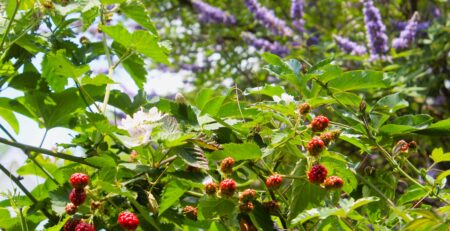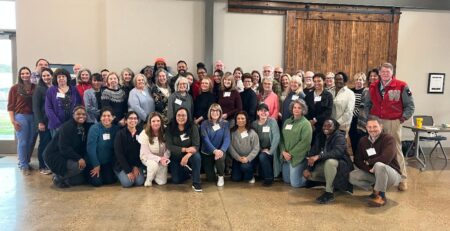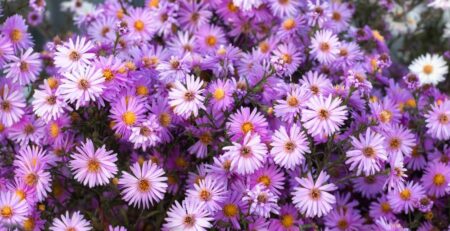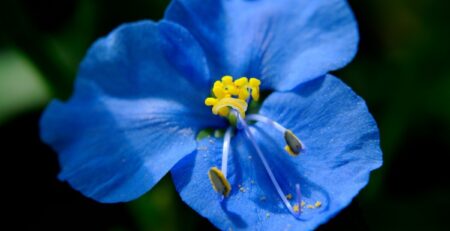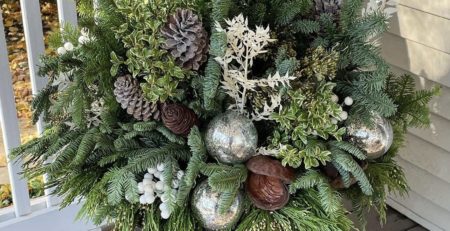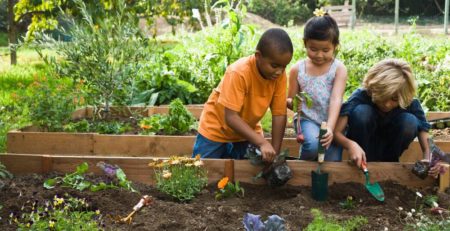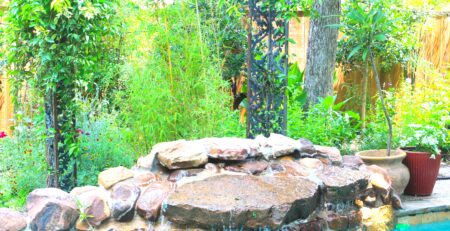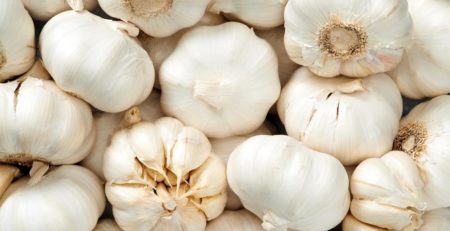Living with Houseplants
A houseplant is a plant that can thrive in normal (not greenhouse) indoor conditions. That means they thrive where we live, with the same light, temperature, space, and humidity. And we provide the food and water.
Light
Light provides the energy plants need to make the food required for them to grow and flower. Commercial growers and greenhouses scientifically control the amount of light specific plants get to optimize growth and ensure they are at peak when put on the market. Don’t expect to duplicate that success in your home.
Houseplants generally get natural light, but the amount they get varies by location. A quick way to estimate the amount of natural light at a location in your house is by noting the intensity of the shadow. South-facing windows are usually brightest because the sun is highest when coming from the south. Time of year will affect that and so will reflections from buildings and objects such as snow, concrete, trees, and awnings.
Most of your plants are adaptable within limits but some have specific needs. They may need short days and long nights to start blooming. Others need complete darkness for a given number of hours every night. In general, blooming houseplants need more light and are more particular about the light they get than those that don’t produce blooms.
If you see a plant needs “indirect” light, place it a few feet away from a south-facing window. If a plant is described as needing “low” light, make sure that it gets daylight but not by a window.
Plants do not use the part of the light spectrum that we prefer, so hobbyists like African violet specialists may employ Grow Lights designed specifically for their plant’s needs. Flourescent lights were typically used as Grow Lights, but now the trend is for LED lights designed for that purpose.
Water
More houseplants are killed by overwatering than underwatering. Except for succulents, which store water in their leaves and stems, a houseplant will die if the roots are allowed to become totally dry. The best way to tell when to water is by poking your finger in the soil. If it’s dry beyond the first half inch, it’s time to water. Check the soil twice a week until you learn the needs of a particular plant. Some large planters can go without watering for a couple of weeks but you may find some plants need watering almost daily, especially if they are in shallow pots. To avoid soggy soil, always use a container with drainage holes.
Soil
Much depends on the type of plant, but most need a loose, rich potting mixture available in any garden center. The packed clay soil we typically find in our yards does not allow oxygen to adequately reach the roots, and sandy soil has large particles and drains too rapidly. Silt is the base for good potting soils. You can make your own potting mixture by mixing organic matter such as peat, and aerating material such as perlite, with a silty garden soil.
Succulents have different needs than other houseplants. Fast drainage is important, so sand and even gravel can be included, but some organic matter is still required.
Can you reuse potting soil? Yes, if it’s clean and doesn’t have a buildup of salts from fertilizer.
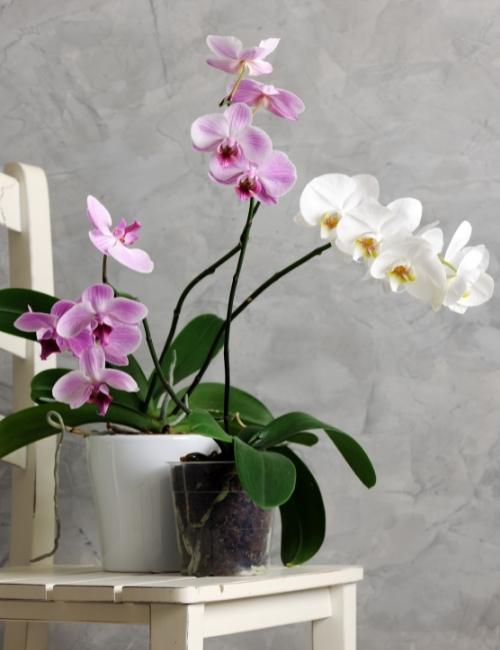
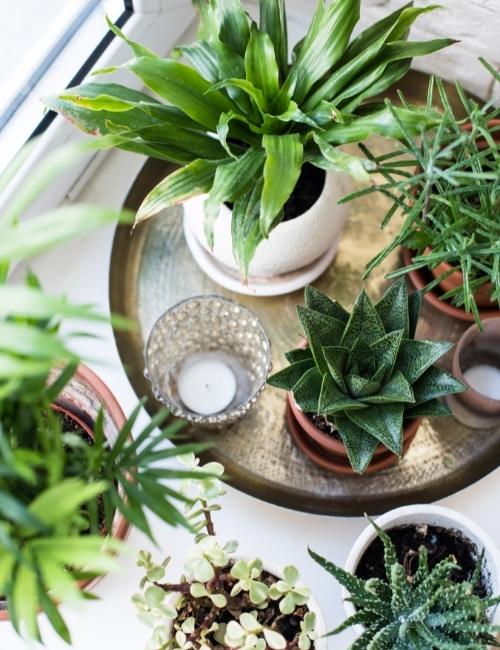
Food
Think of plant food as the vitamins and minerals houseplants need. Just like outdoor plants, their basic needs are nitrogen, phosphorus, and potassium but the ratio varies according to the specific plant variety. Although plants have differing needs, packaged houseplant foods have similar, (but not identical) formulations.
Most soluble plant foods have a blue color. These contain mineral salts that can build up in the soil and on the container. When you see this happening, it’s time to flush out and drain the soil, and scrub the pot. If you are repotting, you might want to start with new potting soil.
A slow-release plant food does not leave mineral residue and can be used for garden plants and most house plants. Sprinkle it and gently work it into the soil surface where the tiny pellets gradually dissolve. Repeat in three or four months.
Orchid and African violet growers have their own formulas for plant food.
Propagation
Houseplants that can be divided are the easiest to propagate and this includes many succulents. As new plants form at the base of the “mother” plant, they can be gently separated and repotted. With some species such as bromeliads, the mother has already bloomed and will gradually die. Other species can be propagated simply by root division, i.e., carefully removing the plant from the pot, shaking off the soil, and gently pulling apart or cutting sections to be repotted.
Some plants that don’t reproduce through division can be propagated by stem cuttings. Take a healthy stem with at least one node, remove any leaves, and plant it in a good potting mixture. Root stimulator powders are available to improve the chances of success.
Insects
Insects are not usually a big problem for houseplants because we do our best to keep our homes free of bugs. Those that most frequently attack house plants include fungus gnats, white flies, and mealy bugs. Good hygiene is the best prevention for all of these.
Fungus gnats are annoying, but do minimal damage. They thrive in moist debris at the surface of your potting soil. Prevent them by keeping the surface free of dropped leaves and blooms, and providing good air circulation. If you identify plants where gnats are congregating, clean the soil surface and isolate them or move them outdoors until they are gnat free. “Sticky trap” products are available if you need more help.
White flies are tiny, but prolific and damaging. You will find them on the underside of leaves, where they lay their eggs and leave a sticky residue. To treat, take the plant outside and hose down the leaves to remove the insects. Repeat as needed, then apply neem oil or soapy water to the undersides of the leaves to discourage new attacks. Swabbing affected surfaces with rubbing alcohol is a sure killer.
Mealy bugs are small, pinkish creatures with a white coating. They suck sap and can kill the plant if left untreated. Start by hosing them off. If there are just a few, dab them with a cotton swab soaked in alcohol. Again, isolate the plant and practice good hygiene. Healthy, clean plants are least susceptible to insects. Needless to say, there are many commercial products claiming to solve all these problems.
Plant Selection
Study the conditions in your room, including light, air movement, space, and temperature, then select plants that match that environment. You will find many. Don’t forget you will be living with them and looking at them every day. Consider how much attention and care you are willing to give them. It is worth the time to research a plant on the internet, a plant-identification app, or a reference book to learn its specific needs before buying it.
If you are gifted seasonal potted plants such as poinsettias, Easter lilies, hydrangeas, amaryllis, or azaleas, don’t plan to keep them as houseplants. Enjoy the poinsettias and lilies until they lose their beauty, then discard. The others can be planted in your garden. Christmas cactus is especially worth keeping because it will grow and rebloom year after year with minimal effort. If you want to try nurturing an orchid, Phalaenopsis is probably the orchid most tolerant of a normal home environment. African violets can be grown without special lighting if you have a bright, but not too sunny, window sill.
Easiest Plants
For something that requires practically no attention, try a succulent with low light needs. If you don’t know a plant’s light needs, look at where it is kept in the garden center. Some of the easiest houseplants to grow are sansevieria, dracaena fragrans, philodendron, and spathiphyllum. They require infrequent watering, are easy to propagate, and numerous cultivars of each are available.
Whatever you choose, enjoy it! If a plant dies, don’t fret too long. It happens to us all. Learn from the experience and try again.
Even as a child Ginnie loved being around plants, and later did the typical homeowner trial and error landscaping. After retiring, she wanted to know more, joining garden clubs, becoming an Arboretum volunteer, and then signing up for the Master Gardener class of 2000. She especially enjoys sharing her love of plants with apartment dwellers and those with physical limitations and believes they too can find fulfillment through gardening.


